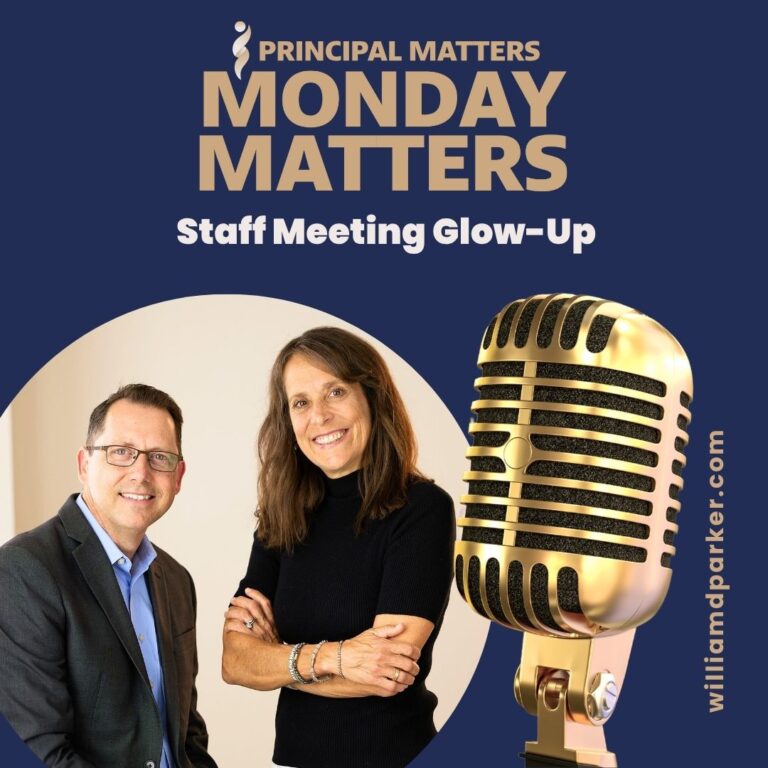This summer I had the privilege of traveling to Washington, D.C. with my superintendent. At our district’s opening meeting with staff, he told a story about one morning when we decided to paddle a kayak on the Potomac near Roosevelt Island.
As we settled into our boat, we both began to paddle in separate directions: two leaders in one boat can sometimes create lots of waves while not moving very far.
Finally, we agreed that paddling together would be a lot more effective than each of us trying to separately navigate the course. As I rowed in front, and he provided steering in the rear, we were able to make good distance along the water and take in the morning sunshine along the Key Bridge near Georgetown.
3 C’s For Good Navigation
It’s the beginning of a new school year for many schools, and I’m so proud of the great start our teachers and students have had at ours. Every year as school begins again, I think about what specific goals our school team can rally around. How can we “row together” to best serve our school community?
Recently, as we brainstormed and discussed specific goals with my leadership team, three common themes took shape: Communication, Conversations, and Culture. Here’s a brief summary of each one and how any school team can use these to steer the same direction—-not just on the first day, but all year long.
1. Communication—-Everyone loves good customer service.
Whether you are providing a greeting at the door, a clear classroom syllabus, or an engaging introduction, students know immediately whether or not they are in a place where they will learn. The same clear communication goes for your entire school community.
Create an environment that’s consistent, firm, friendly, and helpful. When you think about customer service consider these ideas:
- Newsletters to parents with weekly updates of important issues
- Email lists from teachers to parents summarizing the lessons of the week
- Facebook and website updates so you are current with calendars and resources
- Standing at the front door of the school to welcome students and visiting parents
- Quick responses to emails and phone contacts
- Friendly reassurances even when you have to say no about requests that can’t be satisfied
2. Conversations–Professionals do not grow in strategy or procedure without “stealing” ideas from another.
Schools have spent a lot of time discussing how to organize data or test results over the past few years. But something magic happens when teachers begin sharing “how-to” ideas on instruction. Ideas on best practices come when you recognize and mimic the practices of highly effective teachers.
If school leaders or teachers plan to grow in the way they serve students, then you must share ideas as professionals. Because you are often isolated in classroom settings or offices, reach out to those around you. Find out what’s working.These conversations only happen when you begin to ask and listen to those who are modeling the kinds of behaviors you want to emulate. And students benefit as a consequence. Here are some ideas to cultivate better conversations at your school:
- Start a book club for people to discuss shared ideas.
- Hire subs to cover for new teachers who want to spend a day observing veterans.
- Build shared planning periods into your master schedule so that more teachers can collaborate around common subject areas.
- Encourage and support teachers who want to attend inspiring and educational workshops and conferences.
- Model the use of social media–harness the untapped resources that exist in Twitter chats, for instance.
3. Culture–Building patterns of behavior shared across the school to create positive learning.
When team members agree on shared practices, procedures, and routines and create a climate where those practices are consistently followed, they create a unique culture. In other words, when an entire school is united around common expectations, like communication, “customer service”, collaboration, and consistent practices, you create an environment where students feel safe to learn.
Nothing damages culture more than a feeling of being unsafe. All of your best instructional strategies are futile if students don’t know they are safe and what to expect. Building positive cultures begin when leaders set the tone for what’s expected, and the rest of your school team promotes common expectations throughout every classroom.
Research Supports Common Sense Strategies
Child psychologist Dr. Adam Saenz researched hundreds of examples of children in schools and homes to see common tendencies that promote healthy learning. He discovered two consistent expectations that adults communicate to children in secure places: 1. The adult is in control. 2. The adult loves and cares for the child.
Those two priorities build the perfect culture for growing healthy learners.
Conclusion
Rowing up the Potomac was hard work at times, but as my superintendent and I worked together, instead of “doing our own thing”, we found that we reached our destinations while having a blast at the same time. As you start a new school year, commit yourself to the 3 C’s of communication, conversation, and culture: Serve the way you would want your own child served, share best ideas and practices with others, and consistently practice positive actions together. If you commit to these 3 C’s together, you will find yourselves making good distance on the new school year ahead!
Now It’s Your Turn
There are so many other ways to “row together” in building great experiences for school communities. What are some other ideas you would add to the list for creating positive direction for your school or team?
Sign-Up For Free Updates
When you enter your email address here, you will automatically receive my newest posts. Let’s keep learning together!
Principal Matters–The Book!
School leaders are very busy, so each of the twenty-four chapters is designed as a quick-read and followed with take-action questions for follow-up or reflection. If you want practical ideas on understanding your purpose, managing school teams, dealing with challenges, and leading with courage, action, motivation, and teamwork, go HERE to pick up a copy for you or your team.




